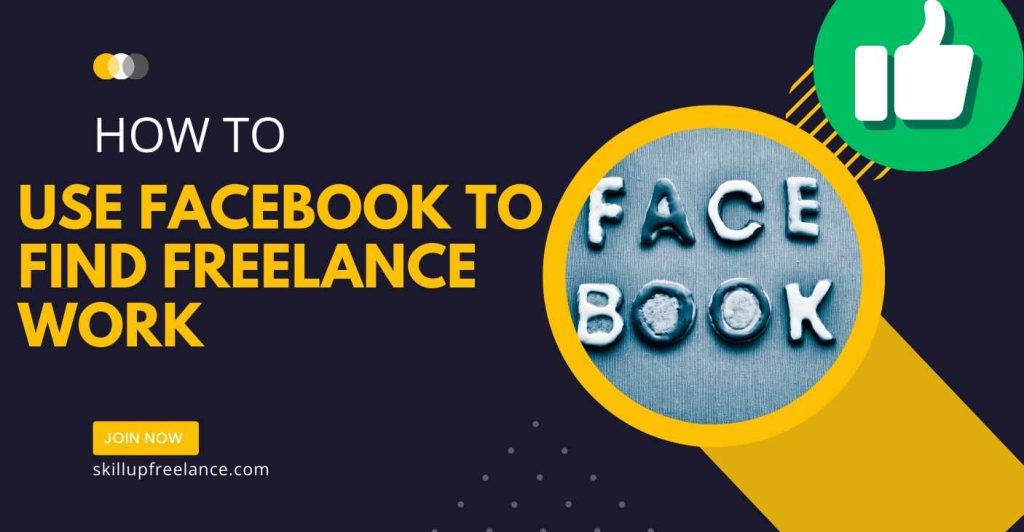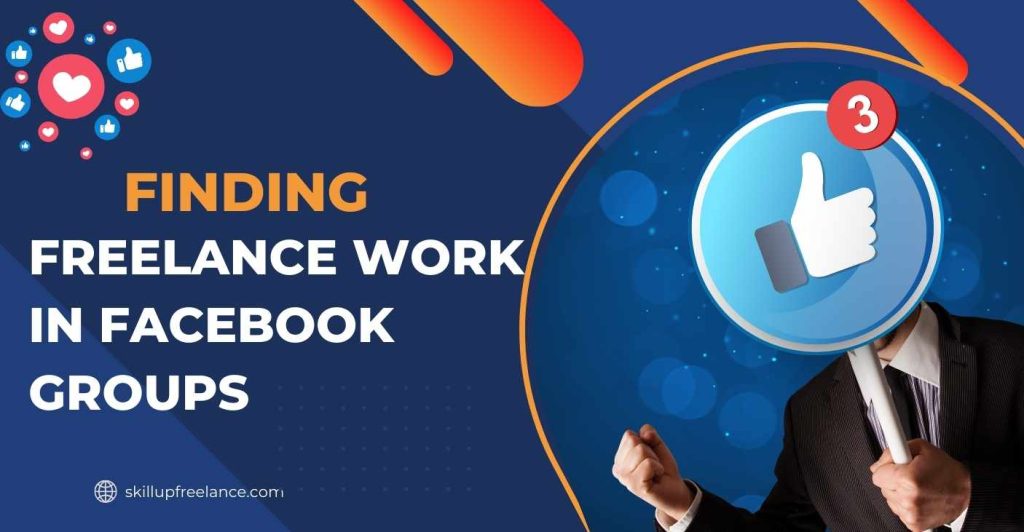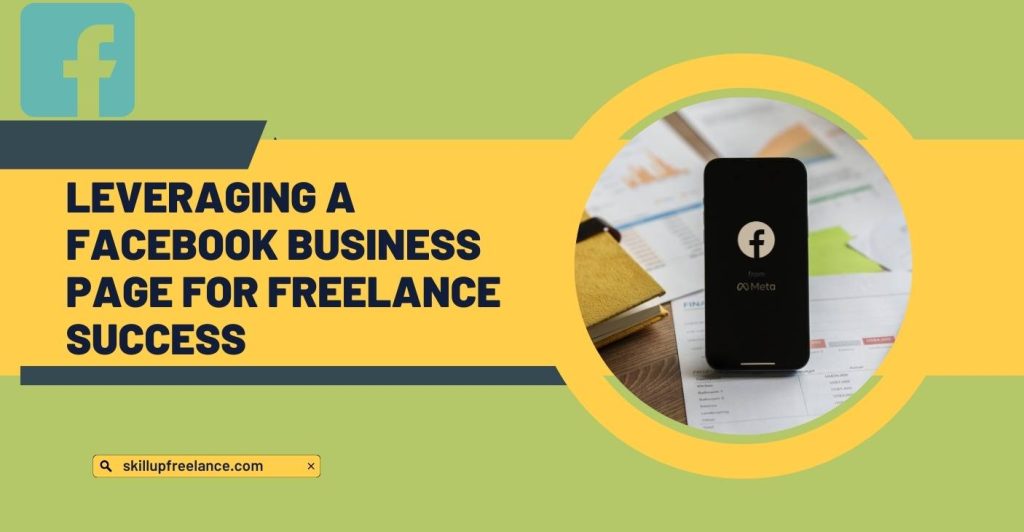How to Use Facebook to Find Freelance Work
Freelancing has become a thriving career option in today’s gig economy, and Facebook—a platform initially designed for social networking—has emerged as a valuable tool for freelancers to find work. This guide will walk you through how to leverage Facebook effectively to secure freelance jobs, network with potential clients, and establish a strong online presence. Whether you’re a beginner or a seasoned freelancer, these strategies will help you unlock opportunities and grow your business.
Why Facebook Is a Powerful Freelancing Platform
Beyond Social Networking
Facebook is more than a platform to connect with friends and share updates; it’s a hub for freelancers looking to network and find job opportunities. With millions of active groups and users, Facebook provides ample opportunities to market your skills, connect with potential clients, and stay updated on industry trends.
Facebook Groups: A Hidden Gem
One of Facebook’s most valuable features for freelancers is its Groups. These communities allow like-minded individuals to share resources, post job openings, and discuss industry trends. By joining relevant groups, you can tap into a pool of opportunities and build meaningful connections.

Getting Started: Optimizing Your Facebook Profile
Create a Professional Profile
Your Facebook profile often serves as your digital business card. Make it professional and inviting to attract potential clients:
- Profile Picture: Choose a clear, high-quality photo or logo that reflects your professionalism and brand.
- Cover Photo: Use this space creatively to highlight your services or showcase your work. For example, include a tagline, a design sample, or a call-to-action.
- Bio: Write a compelling summary that emphasizes your expertise and value proposition. Keep it concise but impactful, like: “Freelance Content Writer | Crafting stories that captivate and convert.”
- Portfolio and Contact Links: Add links to your portfolio, website, LinkedIn profile, or other professional platforms to make it easy for clients to learn more about you.
Privacy Settings
Ensure your profile strikes the right balance between professional and personal by adjusting your privacy settings. Allow potential clients to see your professional posts, reviews, and shared content while keeping personal photos and updates private.
Optimizing Your Facebook Profile
| Element | Description |
|---|---|
| Profile Picture | Use a clear, professional photo or logo. |
| Cover Photo | Showcase your services or work creatively. |
| Bio | Write a short, impactful summary of your expertise. |
| Links | Include links to your portfolio, website, or LinkedIn. |
| Privacy Settings | Balance professional content visibility with personal privacy. |
Finding Freelance Work in Facebook Groups
Facebook Groups can be a goldmine for freelancers, offering opportunities to connect with clients, collaborate with peers, and learn from industry professionals. However, success requires a thoughtful approach. Here’s an expanded guide to help you make the most of Facebook Groups.

1. Search for Relevant Freelance Groups
Start by using Facebook’s search bar to look for groups with broad terms like:
- “Freelance Jobs”
- “Freelancers Connect”
- “Freelance Opportunities”
To refine your search:
- Use Niche-Specific Keywords:
If you specialize in a particular field, include it in your search. For example:
- “Graphic Design Jobs”
- “Content Writing Opportunities”
- “Remote Programming Freelance Work”
- Look for Location-Based Groups:
If you want to work with local clients, search for groups with your city or country in the name, such as:
- “Freelancers in [City/Region]”
- “UK Freelance Jobs”
Examples of Groups:
- Freelance Writing Jobs for Beginners: Great for new writers looking to gain experience.
- Web Developers Network: A space where developers share projects and resources.
- Virtual Assistant Jobs: Dedicated to VAs and administrative freelancers.
2. Evaluate the Group’s Quality
Not all groups are created equal. To ensure you join a group that provides real value, assess its quality:
- Check Membership Numbers:
A group with thousands of active members may offer more opportunities. However, smaller niche groups can also be valuable if they are focused and well-moderated. - Analyze Recent Posts:
Scroll through recent activity to ensure:
- Posts are relevant to the group’s purpose.
- Members are engaging with content (likes, comments, and discussions).
- Avoid Red Flags:
- Groups with excessive self-promotion or spam posts.
- Listings that seem too good to be true, like “earn $500 daily by working 1 hour.”
- Poorly moderated groups where irrelevant content goes unchecked.
Example of an Active Group:
A group where members are posting daily job opportunities, sharing tips, and responding to questions indicates an engaged community.
3. Join and Engage
Joining a group is just the beginning. Your level of success depends on how effectively you engage and interact within it. Follow these steps to build your presence effectively:
Introduce Yourself
Start by creating a short, professional introduction post:
- Mention your name, profession, and expertise.
- Share a unique selling point to set yourself apart.
- Example:
“Hi everyone! I’m Jane, a freelance content writer specializing in SEO-friendly blog posts and web copy for small businesses. I’m passionate about helping brands grow their online presence and would love to connect with you all!”
Engage with Posts
Active participation helps you stay visible. Here’s how:
- Like and comment on posts where members share tips or ask for advice.
- Respond to job listings that match your expertise with tailored, professional replies.
Example Response:
“Hi [Name], I’d love to assist you with your project. I specialize in creating impactful social media graphics and have experience working with [Industry]. Please check out my portfolio here: [Link].”
Add Value to the Group
Position yourself as a helpful and knowledgeable member by:
- Answering questions related to your expertise.
Example:
Question: “Which tool is most effective for scheduling social media posts?”
Response: “I’d recommend trying Buffer or Hootsuite. I’ve used both for managing my clients’ social media calendars, and they’re very efficient!”
- Sharing free resources, such as guides, templates, or tips related to your field.
Example:
“Hey everyone, I recently created a free checklist for optimizing blog posts for SEO. Feel free to download it here: [Link].”
Network with Members
Directly reach out to group members for collaboration or advice. For example:
- Compliment someone’s shared work and ask about their process.
- Offer to collaborate on projects:
“Hi [Name], Hi [Name], I came across your recent post about [Project] and found it really interesting! It’s impressive! I’m a [Your Profession] and would love to collaborate if you ever need help with [Skill].”
Facebook Freelance Group Guide
| Step | Action |
|---|---|
| 1. Search for Groups | Use broad terms like "Freelance Jobs" and niche-specific keywords such as "Graphic Design Jobs". |
| 2. Evaluate Group Quality | Check membership numbers, analyze recent posts, and avoid groups with excessive spam. |
| 3. Join and Engage | Introduce yourself, engage in posts, offer value, and network with members for collaboration. |
Additional Tips for Success in Facebook Groups
- Post Consistently: Share updates, helpful tips, or project highlights once a week to stay visible.
- Track Group Performance: If a group isn’t yielding results after consistent effort, consider leaving and finding more active communities.
- Build Relationships, Not Just Leads: Focus on meaningful interactions rather than solely pitching your services.
By following these strategies, you’ll position yourself as a valuable member of any freelance group and open doors to new opportunities.
Building Relationships and Networking
1. Engage in Group Discussions
Engage actively in discussions to position yourself as an expert in your field. For example, if someone asks for advice on designing a website, share tips or tools you find helpful.
2. Support Other Members
Celebrate their successes and contribute positively to discussions. Being supportive builds goodwill and strengthens your reputation.
3. Collaborate with Freelancers
Networking isn’t limited to finding clients. Partnering with other freelancers can lead to:
- Shared projects.
- Referrals for opportunities outside your niche.
Promoting Your Services Without Spamming
1. Offer Value First
When you see a post asking for help, respond with a solution and subtly mention your services. For instance:
- Instead of saying ‘Hire me,’ try saying, ‘I specialize in this area and would be excited to assist you. Here’s a link to my portfolio.”
2. Share Relevant Content
Post articles, case studies, or tips related to your expertise. This positions you as knowledgeable and helpful without being overly promotional.
3. Avoid Over-Promotion
Limit self-promotional posts to maintain professionalism. Aim for a balance between adding value and showcasing your work.

Leveraging a Facebook Business Page for Freelance Success
Creating and maintaining a Facebook Business Page is an essential strategy for freelancers to showcase their services and attract potential clients. It acts as your digital storefront, allowing visitors to explore your skills, portfolio, and testimonials. Here’s a comprehensive guide to making the most of your page.
1. Create a Facebook Business Page
A well-designed business page reflects professionalism and makes it easy for potential clients to learn about your services. Follow these steps to set up and optimize your page:
- Name:
Use your name if you’re a personal brand (e.g., Jane Doe – Freelance Graphic Designer). For agencies or specific services, choose a clear and descriptive name like Elite Content Solutions. - Bio:
Craft a short but compelling bio that highlights what sets you apart. Include your primary services and a hint of your personality.
Example:
“Helping businesses thrive online! I’m a freelance SEO expert delivering tailored strategies to boost traffic and conversions. Let’s work together to grow your brand!”
- Portfolio:
Showcase your work to demonstrate expertise:
- Upload samples into organized albums by category, such as “Website Designs,” “Blog Writing Samples,” or “Social Media Campaigns.”
- Use captions to provide context, such as project objectives, outcomes, and client feedback.
- Call-to-Action (CTA):
Encourage visitors to take action by adding a CTA button like:
- Contact Us for inquiries.
- Book Now for scheduling consultations.
- View Portfolio to direct visitors to your website or portfolio links.
2. Post Regular Updates
Maintaining consistency is essential for keeping your page visible and engaging. Post updates to stay relevant and showcase your growth:
What to Post:
- Freelance Journey Updates: Share milestones, lessons learned, or behind-the-scenes glimpses of your work process.
Example:
“Excited to wrap up this branding project for [Client Name]! Check out the new logo we created together. Thoughts?”
- Portfolio Highlights: Regularly feature completed projects. Include before-and-after visuals or client testimonials to add impact.
Example:
“Here’s a sneak peek of a landing page redesign I completed for [Industry] client. Increased conversions by 40%! Let’s chat if you need a website upgrade.”
- Educational Content: Share valuable tips, tutorials, or industry insights.
Example:
5 Tips to Enhance Your LinkedIn Profile:
1️⃣ Use a professional headshot.
2️⃣ Craft a compelling headline… [Read More].
- Trending Topics: Post about relevant industry trends to position yourself as an expert.
Example:
“AI tools are changing content creation. Here’s how I use ChatGPT to brainstorm ideas while maintaining human creativity!”
How Often to Post:
Aim for 2-4 posts per week to stay active without overwhelming your audience. Use a mix of content types to keep things fresh and engaging.
3. Gather Reviews and Testimonials
Positive reviews and testimonials build trust and showcase your reliability. Encourage clients to share their experiences on your page.
How to Request Reviews:
- After a Successful Project: Politely ask clients to leave a review.
Example:
“Thank you for trusting me with your project! If you have a moment, I’d appreciate it if you could share your experience on my page to help others learn more about my work.”
- Send Direct Links: Make it easy for clients by providing a direct link to your review section.
What Makes a Good Testimonial:
Encourage clients to highlight specific results, like:
- Measurable outcomes (e.g., increased sales or traffic).
- Positive aspects of your collaboration (e.g., communication, creativity).
Example Review:
“Working with Jane was amazing! She designed a beautiful website for my business, and our online inquiries doubled within two months!”
| Step | Action |
|---|---|
| Create Page | Choose a name, write a bio, showcase your portfolio, and add a CTA button. |
| Post Updates | Share project highlights, tips, and industry trends. Post 2-4 times/week. |
| Get Reviews | Ask clients for reviews with specific results and positive feedback. |
Additional Strategies for a Successful Facebook Business Page
- Use Facebook Insights:
Track the performance of your posts and adjust your content strategy to focus on what resonates with your audience. - Create Engaging Visuals:
Use tools like Canva to design professional graphics for your posts. High-quality visuals grab attention and make your page more appealing. - Run Special Offers:
Occasionally share limited-time discounts or freebies to encourage new clients to work with you.
Example:
“New Year Special: Get a FREE logo consultation when you book a design project this month!”
- Utilize Stories and Live Videos:
Share quick updates or host live Q&A sessions to engage your audience in real-time.

A Complete Guide to Using Facebook Ads to Attract More Clients
Facebook Ads are a powerful tool for freelancers to promote their services and reach potential clients. With the platform’s advanced targeting options and creative ad formats, you can showcase your expertise effectively and grow your business. Here’s an easy-to-follow guide packed with practical tips and examples to help you succeed.
1. Set Clear Objectives
Before launching an ad, it’s crucial to establish your objectives. Ask yourself: What do I aim to accomplish with this campaign?
Here are common objectives and their purposes:
- Drive Traffic to Your Website: Ideal for showcasing your portfolio, blog, or service pages.
Example: ” Explore my recent web design projects and discover how I can help your business stand out!” - Generate Leads: Use lead forms to collect client inquiries or contact details directly from Facebook.
Example: “Looking for a freelance content writer? Fill out this form, and let’s discuss your project!” - Book Consultations: Encourage potential clients to schedule a meeting or call.
Example: “Need expert help with SEO? Book a free consultation today!”
2. Design Compelling Ads
A visually appealing and well-written ad can grab attention and encourage action. Follow these steps to make your ads stand out:
A. Use High-Quality Visuals
- Use bright, clean images or videos that showcase your work or services.
- Highlight your expertise visually.
Example: If you’re a graphic designer, show a before-and-after transformation of a logo you’ve redesigned.
B. Write Clear and Engaging Copy
Keep your text short, but make it impactful. Focus on benefits, not just features.
- Start with a hook: ‘Having trouble boosting website traffic?
- Present your solution: ‘I help businesses thrive with effective SEO strategies.
- End with a CTA: “Message me now for a free consultation!”
C. Add a Strong Call-to-Action (CTA)
Encourage your audience to take the next step:
- “Learn More” → Link to your website.
- “Contact Us” → Start a chat or fill out a form.
“Get Started” → Book a service or consultation.
3. Target Your Audience Effectively
Facebook Ads allow you to pinpoint exactly who should see your ad. This ensures your budget is spent on people most likely to hire you.
A. Define Your Ideal Client
Think about your target audience:
- Location: Local clients or global reach?
Example: A photographer in New York might target “NYC residents within 10 miles.” - Demographics: Age, gender, income level, or profession.
Example: If you’re a resume writer, target young professionals or job seekers. - Interests and Industries: Focus on relevant industries or hobbies.
Example: A fitness trainer could target people interested in “Health & Wellness.”
B. Use Lookalike Audiences
Upload a list of your existing clients or followers, and Facebook will find similar people who might be interested in your services.
C. Retarget Visitors
Run ads for people who’ve visited your website or interacted with your posts but haven’t contacted you yet.
Example: “Still looking for the perfect website design? Let’s create something amazing together!”
4. Monitor and Optimize Performance
Running the ad is just the beginning. Use Facebook Ads Manager to track your campaign’s performance and make improvements.
Key Metrics to Watch
- Click-Through Rate (CTR): Shows how many people clicked on your ad. A high click-through rate (CTR) indicates that your ad is relevant.
- Cost Per Click (CPC): Keep an eye on costs to ensure your campaign stays within budget.
- Conversions: Measure how many leads, bookings, or inquiries your ad generates.
Tips to Improve Performance
- A/B Testing: Run two versions of an ad with slight differences (e.g., image or headline) to see which performs better.
- Adjust Targeting: If your CTR is low, refine your audience to ensure you’re reaching the right people.
- Refresh Content: Update your visuals or text if engagement drops.
5. Advanced Tips for Success
A. Offer a Special Promotion
Entice potential clients with a limited-time discount or freebie.
Example: “Get 20% off your first social media management package—offer ends Friday!”
B. Highlight Success Stories
Feature testimonials or case studies in your ads to build trust.
Example: “John’s website traffic doubled in 3 months with my SEO services. Let’s work on your site next!”
C. Use Video Ads
Videos can grab attention more effectively than images. Create short clips that showcase your services or explain how you can help.
Example: A video ad for a freelance illustrator could show a time-lapse of creating a character design.
D. Test Different Formats
Facebook offers various ad formats, including:
- Carousel Ads: Showcase multiple images or projects in a single ad.
- Story Ads: Use full-screen visuals to capture attention on mobile devices.
Example Facebook Ad for a Freelance Graphic Designer
Image/Video: A carousel featuring “before-and-after” logo designs.
Headline: “Transform Your Brand with Stunning Designs!”
Text:
” Your logo represents your business—make it memorable! I design unique, eye-catching logos tailored to your brand. Message me today for a FREE consultation.”
CTA: [Get Started]
6. Keep Experimenting and Learning
Every campaign provides valuable insights. Analyze your results, adjust your strategy, and experiment with new ideas. Over time, you’ll discover what works best for attracting clients through Facebook Ads.
| Step | Action |
|---|---|
| Target Audience | Define client, use lookalike audiences, and retarget visitors. |
| Optimize Performance | Track CTR, CPC, conversions; A/B test and adjust targeting. |
| Advanced Tips | Offer promotions, use videos, and test ad formats. |
| Experiment | Analyze and refine strategies based on campaign results. |
FAQs About Finding Freelance Work on Facebook
1. Is Facebook suitable for beginners?
Yes, Facebook offers accessible opportunities for freelancers of all experience levels. Start by joining beginner-friendly groups and engaging with the community.
2. How can I avoid scams?
- Check the legitimacy of job posts and profiles.
- Never pay to apply for jobs.
- Use secure payment methods for transactions.
3. How often should I post in groups?
Focus on quality over quantity. Aim to contribute meaningful posts or comments 2-3 times a week.
4. Can I find long-term clients on Facebook?
Absolutely. By building relationships and showcasing your expertise, you can secure repeat clients and long-term projects.
5. What types of freelance jobs can I find on Facebook?
You can find a wide range of opportunities, including:
- Graphic design projects.
- Content writing and copywriting gigs.
- Web development contracts.
- Virtual assistant positions.
- Marketing and social media management roles.
6. Should I use my personal profile or create a separate business account?
It’s best to create a dedicated business page for a professional appearance. However, you can optimize your personal profile by adjusting privacy settings and highlighting your skills in public posts.
7. How do I make my profile stand out to clients?
- Use a professional profile picture and cover photo.
- Write a compelling bio showcasing your skills and services.
- Add links to your portfolio or website.
- Post testimonials and examples of your work.
8. What should I avoid doing in Facebook groups?
- Spamming with overly promotional posts.
- Ignoring group rules or guidelines.
- Posting irrelevant content.
- Being unprofessional in comments or discussions.
9. How can I negotiate rates with clients on Facebook?
- Be clear about your pricing upfront.
- Highlight the value you bring to the project.
- Offer packages or tiered pricing for flexibility.
- Don’t undersell your services; focus on quality and professionalism.
10. Are Facebook Ads worth the investment for freelancers?
Yes, Facebook Ads can be highly effective for reaching a larger audience and targeting potential clients. Start with a small budget, test different formats, and adjust based on performance metrics.
Final Thoughts
Facebook is a versatile platform that goes beyond social networking to offer freelancers a wealth of opportunities. By optimizing your profile, joining the right groups, engaging with the community, and using Facebook’s tools strategically, you can grow your freelance business and build a strong professional network. Consistency, professionalism, and value-driven interactions are key to unlocking Facebook’s full potential for freelancing success.
Take the first step today—update your profile, join a group, and start connecting with your next client!